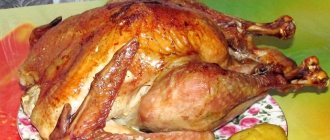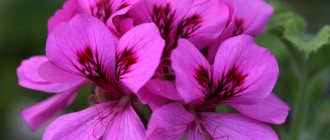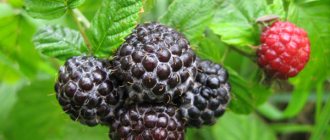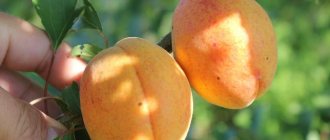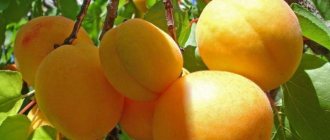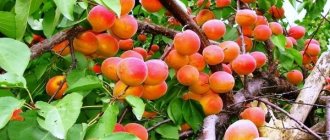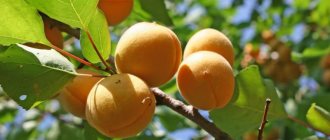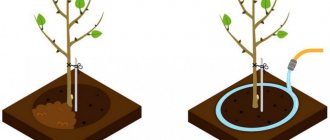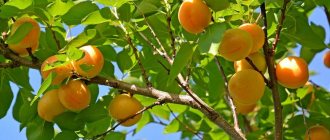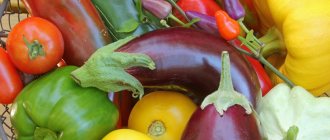Description of the poles
What are poles? Wild apricot, or zherdela (zherdel), is a deciduous tree belonging to the plum genus and reaching 17 m in height. Translated from Persian, the word means golden fruit.
The rounded sheets have finely toothed edges and a retracted tip. Ovaries are formed on annual shoots. Pinkish and white flowers bloom before the first leaves appear. When the plant blooms, the branches resemble airy clouds that smell delicately. The flowering period of light pink buds takes from 7 to 10 days. The crown shape is a pyramid.
In common parlance, the plant is called kurega, yellow plum, and jardel.
The fruit comes from China, but today zherdelu is grown in the following areas:
- Afghanistan;
- Turkey;
- Transcaucasia;
- Iran.
Zherdela is cultivated in the north of the African continent, in the southwestern regions of Asia and in southern Europe. Cultivated varieties are zoned in the southern regions of the Russian Federation. At dachas in the Moscow region, amateur gardeners grow poles. The fruit tree is similar in appearance to varietal apricot.
The appearance of apricot in Russia dates back to the mid-17th century. We planted 2 seedlings that were brought from abroad in the Izmailovsky Garden. In 1913, the Russian state took a leading position in the cultivation of apricots.
You can make a pole from dried apricot kernels; they are planted in the fall with the pointed end up. The appearance of sharp thorns on seedlings is a reason to get rid of the plants: the fruits will be bitter and small. It is advisable to plant 2 or 3 perch trees in the garden to ensure pollination. An unassuming crop develops and bears fruit in poor soil. The culture is not afraid of returning frosts and droughts. Immune to plant diseases and pests.
The apricot tree is characterized by rapid development: a sweet harvest is obtained in the 5th year after planting. Fruits are harvested when they are fully ripe. A ripe perch is characterized by juiciness, softness, uniform color, and the absence of greenish stripes and spots. Long fruiting (almost 100 years) is characteristic of the zherdela tree.
Breeders develop hybrids from apricot varieties and zherdelos, which are used to prepare delicious dishes. Popular varieties:
- poles Abundant;
- Manchurian;
- Siberian.
Additional Information. Zherdela is mentioned 4000 BC. in the chronicles of Ancient Armenia. These fruits are distributed in European countries thanks to the campaigns of Alexander the Great. The provisions for the army convoy included dried fruits, which were valued for their hematopoietic properties and ability to restore immunity and relieve inflammation.
Due to its acoustic properties, pole wood is used in the manufacture of soundboards for musical instruments.
Zherdela and apricot - what is the difference
If poles and apricots are compared, the difference is manifested in the following indicators:
- Size. Wild ones are often smaller than apricots.
- Pulp structure. Zherdela has fibrous, loose pulp, while varietal fruits have uniform pulp.
- Bone. In apricot it is small, in wild game it is large and inedible.
- Spikes. Found in wild species.
- Taste properties. Varietal apricots have a rich, sweet taste compared to zherdela fruits. The wild fruit is also bitter, which is explained by its low sugar content.
Zherdela is often used as a rootstock for apricots, which guarantees intensive growth, large fruits, and high yields.
Definitions of fruit
Before learning how an apricot differs from a zherdela, you need to get acquainted with detailed descriptions of both types of fruits. These are different fruits that should not be confused with each other!
If you look at the photo, you will see the familiar rounded yellow fruits - you probably have loved them since childhood!
Apricots
- Belong to the genus Plum;
- Homeland - China, now grown in Armenia, Iran and Turkey, North Africa;
- They grow on a deciduous tree 5-8 meters high;
- The leaves are small, oval, forming a lush crown;
- Flowers appear in March-April on each branch;
- The fruits ripen in June and weigh from 30 to 150 grams.
Zherdeli
Now let's talk about wild apricots - poles!
- Came to us from China, now grown in Asia, Europe and Russia;
- The harvest ripens in the first half of August;
- The perch tree reaches 15-17 cm in height;
- The flowers are medium in size, have a pleasant scent and pinkish-white color;
- Bears fruit 4-5 years after planting, consistently from year to year
- The weight of the fetus is no more than 60 grams.
This variety of apricots can be eaten fresh and used as an ingredient in many dishes.
You already understand that these two plants are completely different - varietal apricots and wild, ungrafted poles. This sign alone is not enough, it’s time to study in detail what the difference between fruits and trees is! We’ll also note if there are any similarities.
Also recommended: Is there a difference between caraway and thyme?
Beneficial features
Zherdela and apricot are not inferior to each other in the number of positive properties that manifest themselves in:
- preventing constipation;
- regulation of the functioning of the gastrointestinal tract;
- protecting the skin from ultraviolet radiation;
- increasing hemoglobin levels;
- lowering blood pressure;
- replenishing iodine deficiency;
- strengthening immune responses;
- activation of brain activity;
- lowering cholesterol;
- eliminating eye fatigue, lethargy;
- getting rid of anemia;
- normalization of heart rhythm;
- stabilization of the condition after colds and infectious pathologies;
- rapid restoration of the integrity of the oral mucosa during stomatitis.
Perch and apricot - what's the difference? Let's figure it out together!
The summer months are not only warm and sunny, but also very tasty. A large amount of fruit appears on various trees and bushes in summer cottages, and then on store shelves.
The whole family enjoys such a delicacy, and thrifty housewives prepare delicious preserves, jams and compotes to pamper their loved ones even in winter. Apricot is a popular and well-known fruit in our area. Gardeners fell in love with it due to its ease of care and productivity. Its subspecies is zherdela.
It is not inferior in its characteristics and is increasingly used by gardeners. This article will help you find out what is the difference between apricot and zherdela.
Uses of the pole
The scope of application of the pole is not limited to cooking; the fruit is used in cosmetology and folk medicine.
In cosmetology
The beauty industry has not left the pole unattended. The oil obtained from the seeds slows down aging and restores youth to the skin. The product has a positive effect on the condition and appearance of the epidermis:
- eliminates vitamin deficiency and lack of moisture;
- smoothes wrinkles;
- removes peeling and cracks;
- cleanses pores;
- softens the skin.
Used for wraps, massage, moisturizing, preparing creams.
The sticks have a beneficial effect on the nail plates, giving strength and shine. The use of shampoos and masks made from fruits makes hair manageable, silky, accelerates growth, and resists hair loss. A body scrub is made from fruit seeds.
In medicine
The stick is useful after prolonged use of medications: it removes metabolites that accumulate during therapy. For sunburn, treat the skin with juice: it provides cooling and pain relief. You can eat fruit at the same time. Oral consumption of fruits is responsible for the anti-inflammatory effect.
Fruits are irreplaceable for a smoker: eliminates intoxication. Including 6-7 fruits in your diet every day combats the effects of smoking 7-10 cigarettes. In the summer heat, fruit juice will restore water balance in the body.
Alternative medicine says that zherdela juice is useful as a diuretic, in addition it regulates the functioning of the digestive organs and normalizes the acidity of the stomach. It is advisable to drink this juice for colitis and dysbiosis.
Supporters of traditional and folk medicine unanimously claim that a decoction of the leaves removes toxins. Systematic use of the decoction (250 ml before breakfast) helps to cope with the adverse effects of workers who are employed in hazardous work.
Fresh fruit juice is suitable for thinning mucus and relieving dry cough. The poles will help in the treatment of bronchitis, whooping cough, tracheitis.
In cooking
The use of poles for culinary purposes is no different from apricots. Prepared from fruits:
- jam, jam, confiture;
- pie filling;
- juice, liqueurs, compotes.
From the kernels you can put a ready-made dessert - nuts on the table.
The way out is to buy a package of seeds in a supermarket: the product has undergone special processing, contains vitamin B17 in small quantities, and there is no bitterness.
The mash from zherdela juice is obtained without sugar, and as a result of distillation, high-quality vodka is obtained. Housewives can and dry fruits for the winter. Fruits are prepared:
- with a pit - apricot;
- pitted – dried apricots;
- removing the bone through a small hole - kaisu.
Overeating zherdela fruits - more than 0.5 kg daily - can negatively affect your well-being. If you eat a little fruit, digestion improves, and the feeling of heaviness in the stomach disappears after excessive food consumption.
Varietal and wild apricots
The beneficial properties of the “sun fruit” have been known since ancient times. The culture is also very different in its capriciousness and demands on content and climate. The plant prefers sunny places with warm winters. Modern breeders have developed varieties that are more resistant to frost and long winters.
“Sunny fruits” can be consumed fresh or dried. Dried apricots are probably known to many connoisseurs of healthy and tasty dried fruits; they are made from the harvest of certain varieties. Regular consumption of delicious fruits with a subtle aroma helps restore strength, strengthen the immune system, and improve the health of the body as a whole.
There are a huge number of species of this delicious plant. In Latin it is called Prunus armenika (Armenian plum), in China - ansu, in Korea - mume.
But there is a wild apricot that is successfully grown in any region, including those with an unfavorable climate.
Wild apricot zherdel also has many different names - yellow plum, kurega. Externally, these two plants are completely different. But thanks to the efforts of breeders, there are varieties of crops that are impossible to distinguish from each other with an unprofessional eye.
Contraindications and harm
Zherdela may cause negative consequences when consumed. Fruits are contraindicated in the following cases:
- individual intolerance;
- increased stomach acidity;
- predisposition to diarrhea, flatulence, colitis;
- diabetes;
- obesity.
You cannot split or eat the zherdela bone, drink it with water or milk, otherwise diarrhea cannot be avoided.
Planting a perch tree on a personal plot and maintaining it will not cause any trouble. The plant will delight you with flowering in the spring and will bring a generous harvest by the end of the summer season. All that remains is to germinate the seed.
The difference between a pole and an apricot
| Zherdela Description of the variety:
| |
| Apricot Description of the variety:
|
Diseases and pests
| Cytosporosis Ways to fight:
| |
| Bacterial burn Ways to fight:
| |
| Aphid Ways to fight:
|
Wonderful tree
The Eurasian continent is considered the birthplace of apricot. The botanical name of the species is Armenian plum. It is not so easy to find a wild tree in nature. Even in Armenia itself, which became the starting point from where the fruits quickly spread to other countries, there are practically no progenitor trees.
The apricot was nicknamed wonderful because it does not require complex specialized care. It is enough just to periodically water it, as well as trim it in order to rejuvenate and give the crown a beautiful shape. Particularly careful gardeners prefer to pick apricots from the branches so that they do not crack when they fall. Some gardeners stretch the fabric, allowing the fruits to separate from the tree on their own.
The main need of an apricot (whether it is wild or not) is a large amount of sun. For them, you should choose the most illuminated place. Then the tree's yield will be abundant.

